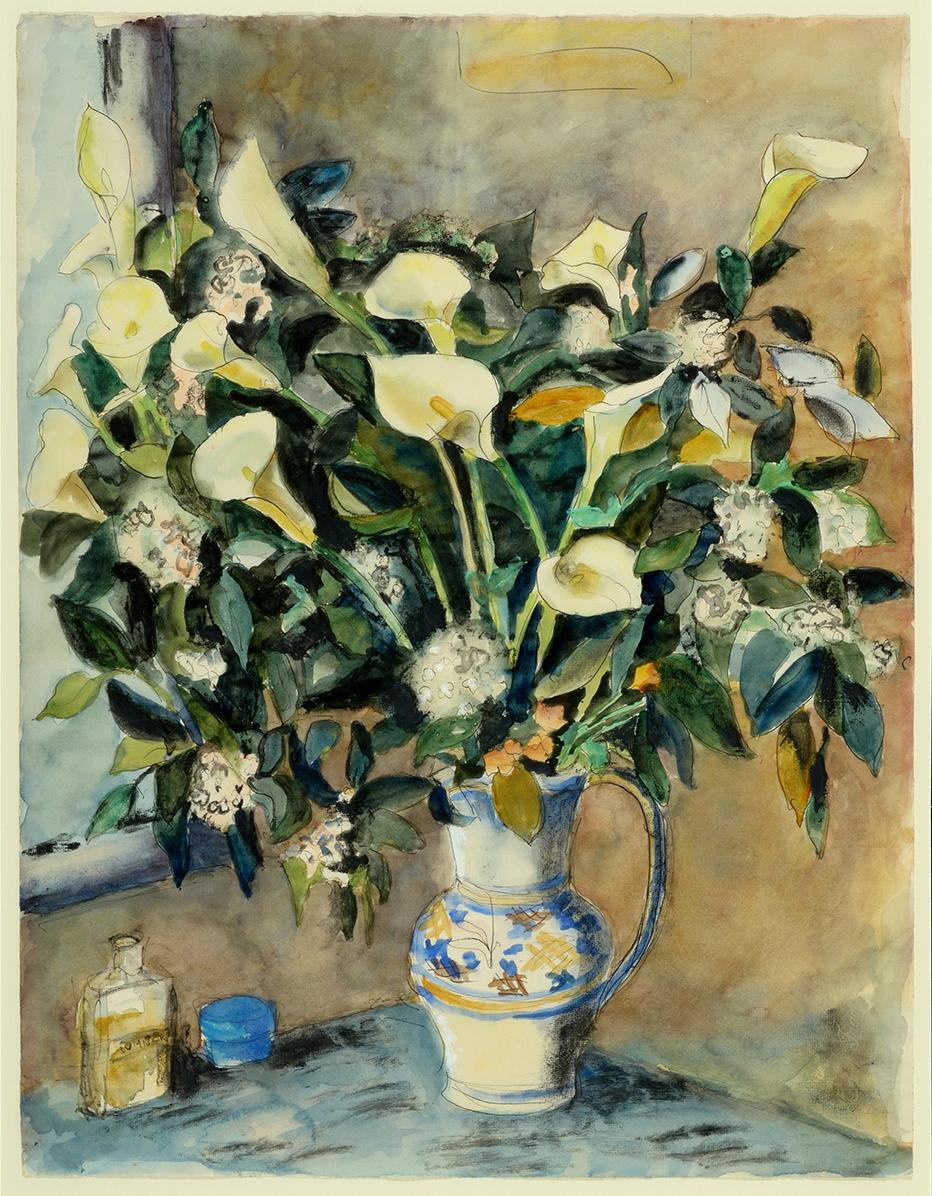Maud Frances Eyston SUMNER (1902 – 1985)
BIOGRAPHY
Maud Sumner attended Roedean School in Johannesburg, and eventually moved to London, first studying Literature at Oxford from 1922 to 1925, and later studying Painting at Westminster School of Arts.
Attracted to the French art scene, she moved to Paris in 1926, where she studied for four years at the Academie de la Grande Chaumière, returning on several occasions later in her career to further her art training and work at the Ateliers d’Art Sacré. She had her first solo exhibition at Galerie Druet in Paris in 1932.
She immersed herself in the warmth of French Intimism, focusing on studio interiors and various still life compositions. During this time, Sumner’s art was absorbed by the richness of colour and texture of everyday objects, flowers, interiors and figures.
A trip to Spain in 1936 provided new material, and she was deeply influenced by the work of El Greco. Around 1940, after the start of the Second World War, she moved back to England, continuing her art career in Warwickshire.
In 1941, she returned to South Africa, maintaining the Intimist tradition she had begun in France. Her painting was focused primarily on interiors, still life compositions and the human figure. These works were shown at exhibitions of the New Group, and were attuned with Post-Impressionist works by artists such as Enslin du Plessis, Gregoire Boonzaier and Terence McCaw. Sumner stayed in South Africa until 1949, holding at least 16 solo exhibitions between 1941 and 1945.
On her return to France, she found a post-war Paris that was significantly altered. Her style changed considerably, and she began to produce more experimental work, initiating her period of ‘fragmentation’.
For a large part of her artistic career, Sumner divided her time between London, Paris and Johannesburg, frequently exhibiting in the latter two cities. It was only in her later years that the vast spaces, simplicity and intense colour of her native South Africa began to influence her art.
She began to travel to Namibia in the 1960s. Esmé Berman describes her desert paintings of this period as some of her finest works.
Sumner is particularly celebrated for her watercolours. She was awarded the Medal of Honour by the Suid-Afrikaanse Akademie vir Wetenskap en Kuns in November of 1971, an award accompanied by a successful ‘semi-retrospective’ exhibition at the South African Association of Arts Gallery in Pretoria.
During her stay in Paris in 1978, she was diagnosed with Guillaume Barré syndrome, a rare peripheral nerve disorder.
She remained an active artist and poet until her death in early January 1985 at her home in Melrose, Johannesburg. Her oeuvre includes painting, drawing, poetry and writing.


